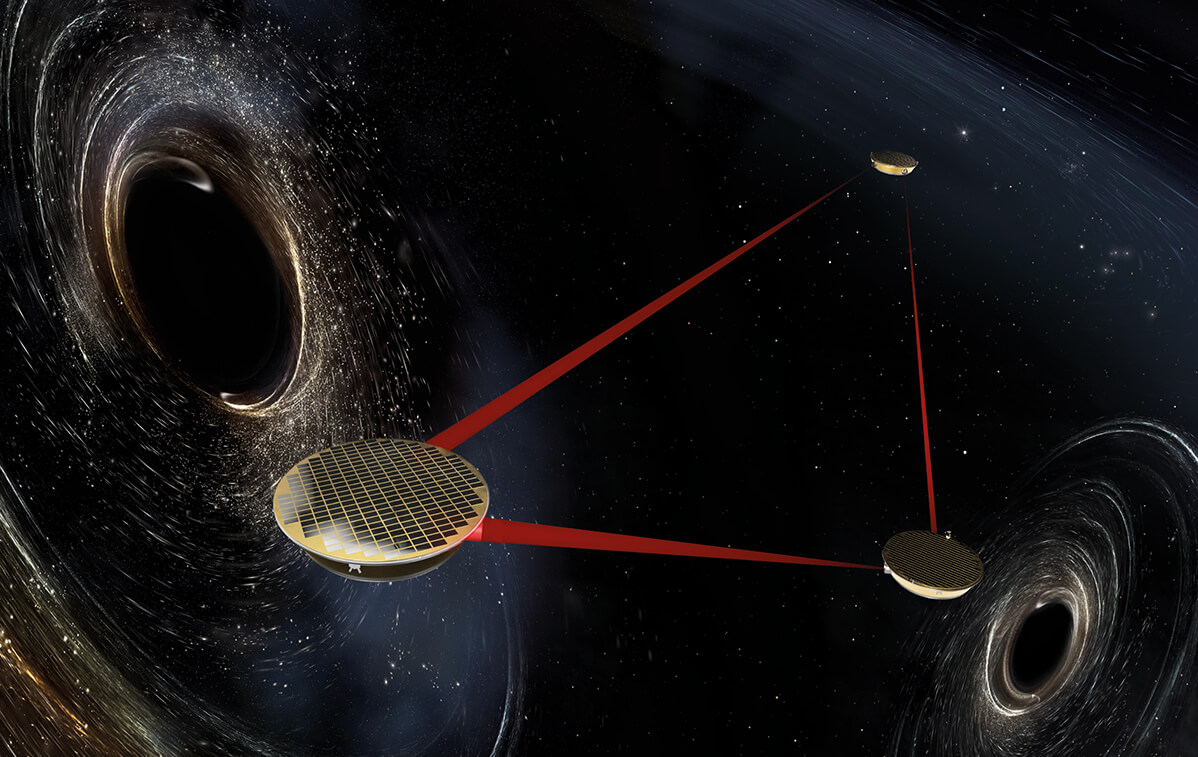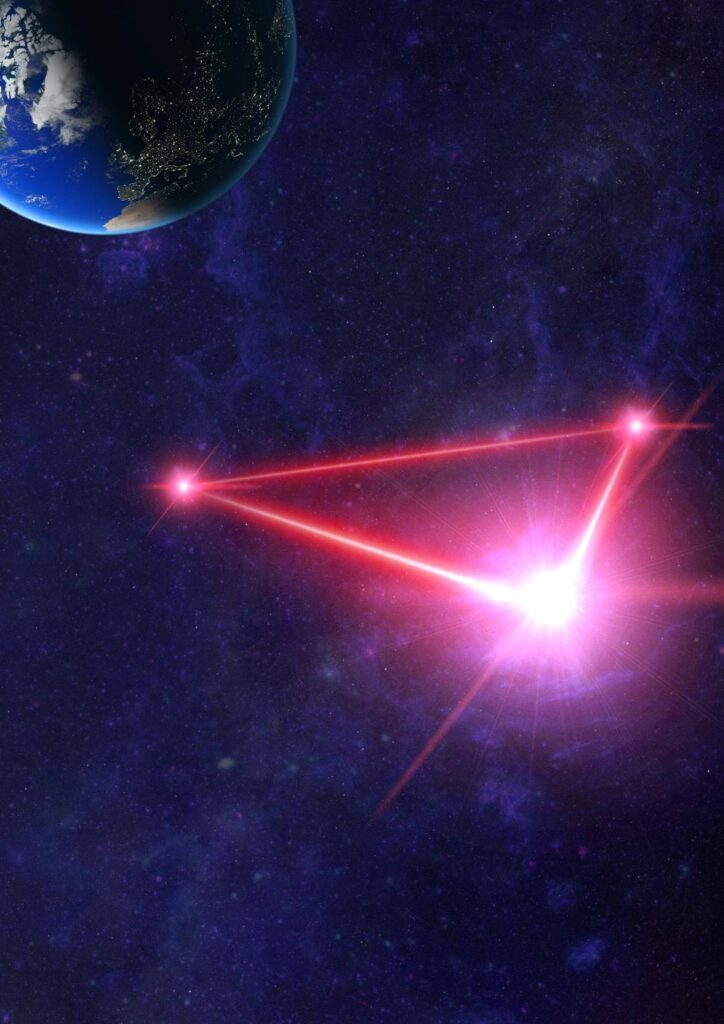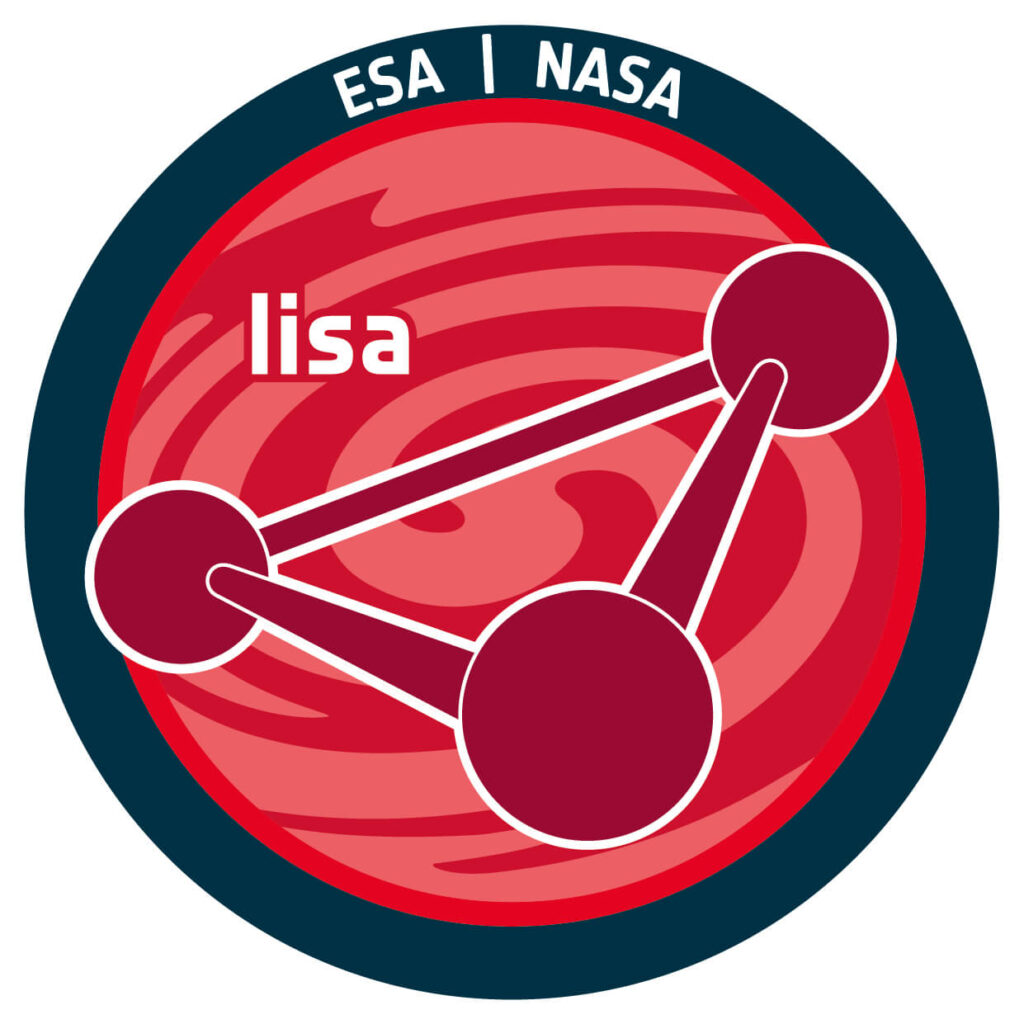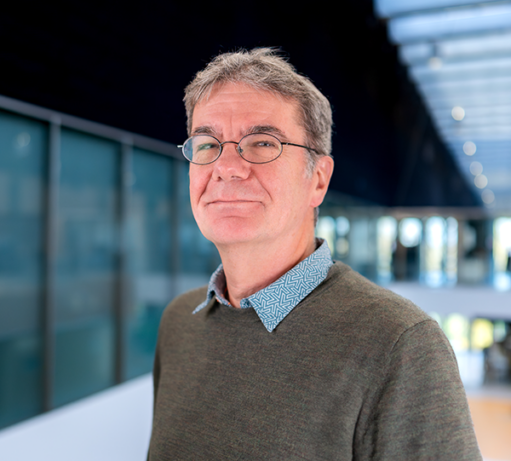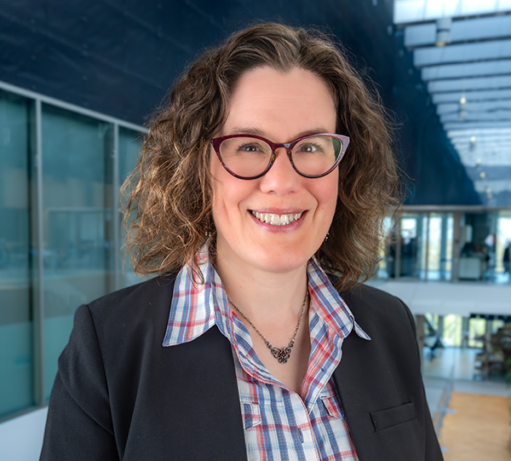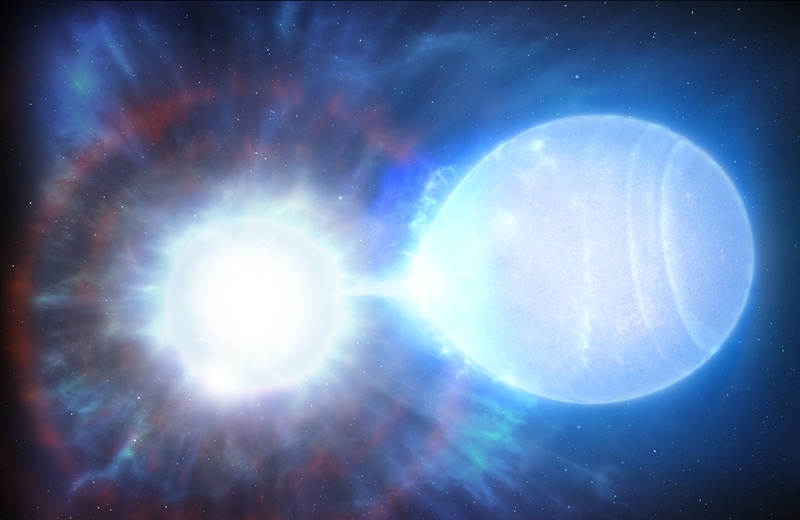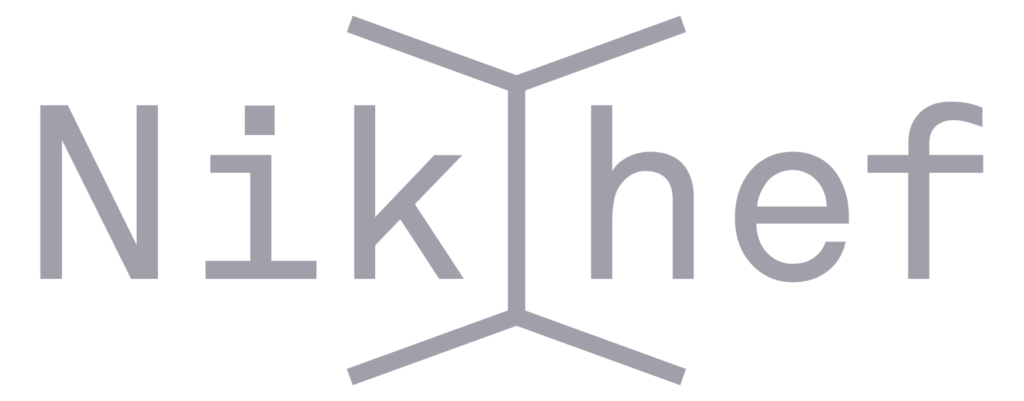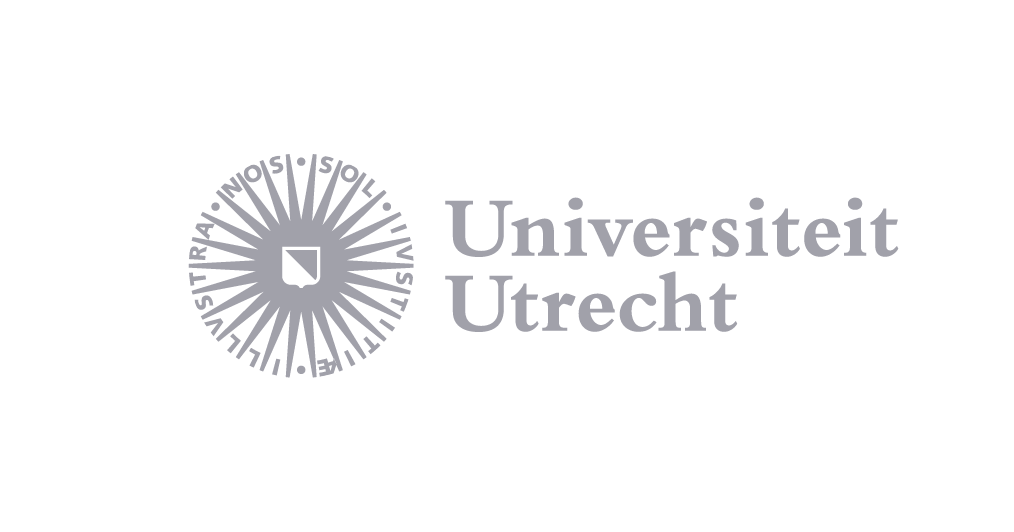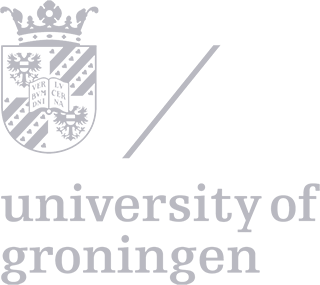| Status | In ontwikkeling |
| Lancering | 2037 |
| Ruimtevaartorganisatie | ESA |
| Type | Zwaartekrachtsgolven (10⁵-10⁹ km) |
| Orbit | Heliocentrisch (55 miljoen km achter de Aarde) |
| SRON-instrument | Fotodiodes en Mechanism Control Unit |
LISA luistert naar het heelal
Alle SRON-missies vangen elektromagnetische straling op, zoals infrarood, röntgen of zichtbaar licht. Maar dat is buiten LISA gerekend, die niet naar het heelal ‘kijkt’, maar ernaar ‘luistert’. Zoals geluidsgolven bestaan uit trillingen van de lucht, zo zijn zwaartekrachtsgolven trillingen van de ruimte. Detectoren op aarde observeren daarmee zwarte gaten of compacte sterren die met zoveel geweld op elkaar botsen dat ze op miljoenen lichtjaren afstand nog te horen zijn. Botsingen tussen nóg zwaardere objecten genereren golven met langere golflengte, die alleen hoorbaar zijn voor telescopen met een spanwijdte veel groter dan de aarde. In de ruimte kan LISA haar armen uitstrekken tot 2,5 miljoen kilometer en daarmee samensmeltingen horen van superzware zwarte gaten. Ze is gevoelig voor golflengtes tussen honderdduizend en een miljard kilometer.
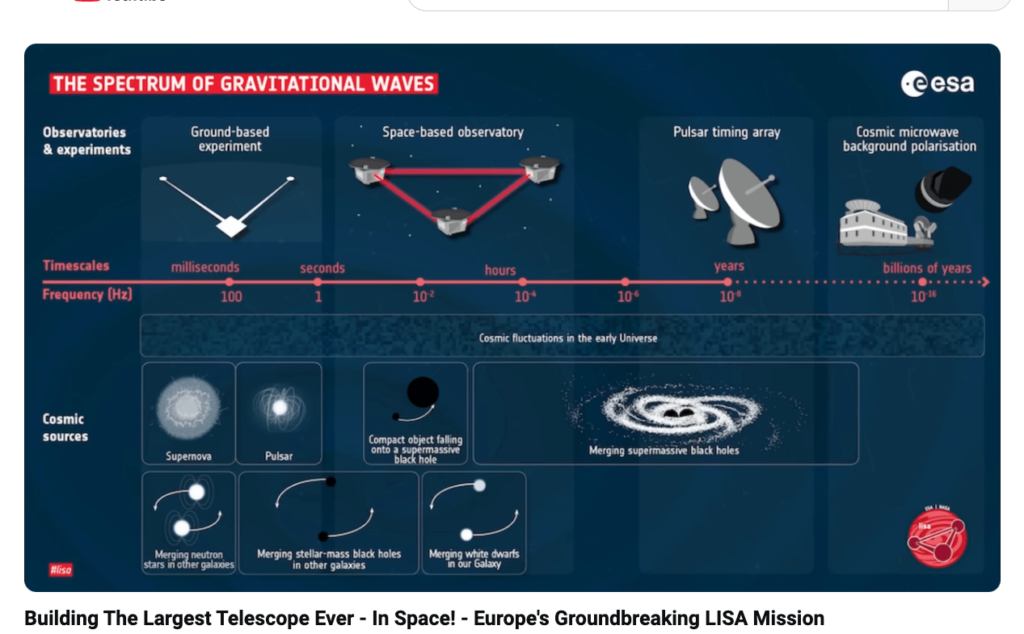
Verre heelal
Zwaartekrachtsgolven uit het verre heelal hebben ook lage frequenties, omdat hun golflengte tijdens hun reis uitrekt dankzij de kosmische uitdijing van het heelal. Zo doet LISA als eerste metingen aan de periode vlak na de oerknal, toen het heelal waarschijnlijk met ongekende snelheid uitdijde. Astronomen hopen bovendien met LISA de eerste zaadjes van superzware zwarte gaten te zien in de eerste honderden miljoenen jaren van het heelal. Ook de (aanlopen naar) botsingen van compacte dubbelsystemen in onze Melkweg vallen binnen LISA’s bereik, zowel van dubbele zwarte gaten als van andere soorten compacte dubbelsystemen.
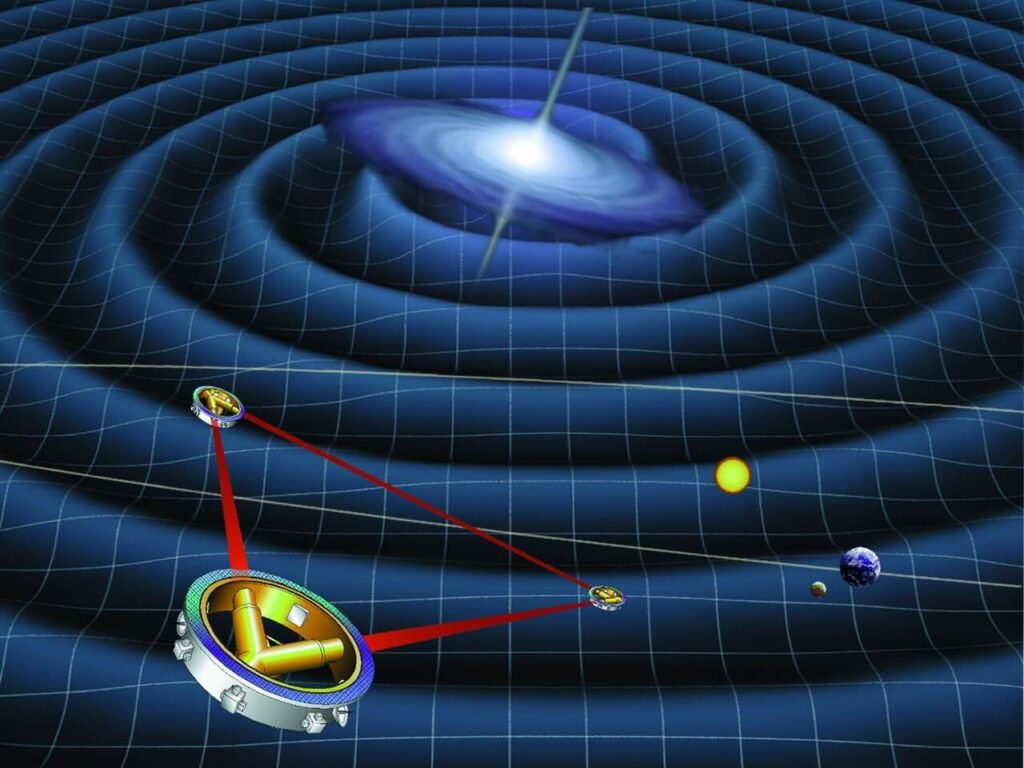
Drie ruimtevaartuigen
LISA bestaat uit drie ruimtevaartuigen die hun onderlinge afstand in de gaten houden met laserstralen. Wanneer die afstand op en neer golft, weet de detector dat er een zwaartekrachtsgolf passeert. LISA wordt zó gevoelig dat ze bij bepaalde golflengtes al de uitrekking van de ruimte opmerkt op een schaal van één op een triljard, ofwel een 1 met 21 nullen. Met LISA’s armen komt dat neer op variaties van enkele picometers. Dat is ook nodig omdat veel van de onderzochte hemellichamen miljarden lichtjaren ver weg liggen, en dus zijn hun zwaartekrachtsgolven afgezwakt als ze aankomen in ons zonnestelsel.
Detectoren voor infrarood lasers
SRON ontwikkelt samen met Nikhef, Bright Photonics en Smart Photonics de detectoren die de infrarode laserstralen ontvangen. Dat is geen sinecure, want hoewel de lasers aanvankelijk zo fel zijn als een tafellamp van 1 Watt, zijn ze na hun reis van 2,5 miljoen kilometer afgezwakt tot 250 picoWatt. Dat betekent ook dat je ze niet met een spiegel kunt terugkaatsen, zoals bij grondtelescopen. In plaats daarvan meet de detector een bepaalde eigenschap van de laser die snel fluctueert. De aankomsttijd van de laser is dus bepalend voor die eigenschap op dat moment. Als die varieert tussen opeenvolgende laserpulsen, moet er een zwaartekrachtsgolf zijn gepasseerd.
Mechanisme voor bewegende delen
SRON ontwikkelt ook het mechanisme dat de bewegende delen aanstuurt, samen met TNO en andere instituten. Dit moet onder meer de laserstralen precies de juiste richting meegeven. Een extra moeilijkheid is dat de lasers er acht seconden over doen om een ander ruimtevaartuig te bereiken, terwijl dat in volle vaart door de ruimte zoeft. Dit komt neer op het vanuit Nederland aanwijzen van de plek waar een dubbeltje over acht seconden zal zijn terwijl het van de Eifeltoren valt.



